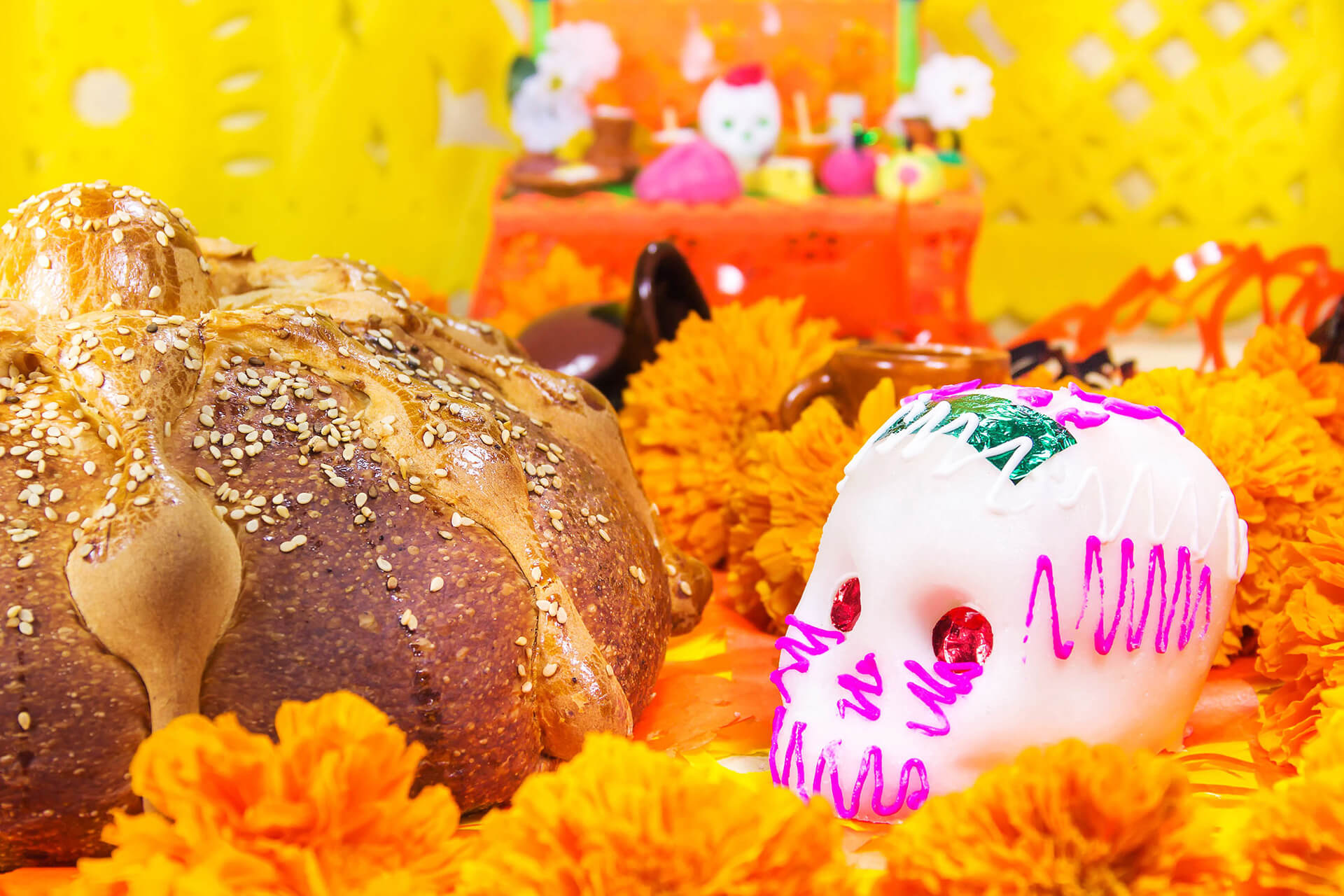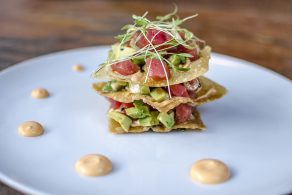
The Day of the Dead in Mexico is a national holiday that is full of life. It is a festivity that bursts in color, music, customs, decoration, symbolism, flavors, religion and millenary traditions.
Traditions are the transmission of customs or beliefs from one generation to the next, and it is not a simple task to define when a tradition is based on facts or on superstitions. In the end, it doesn’t really matter, Mexicans have the ability to merge everything into each of their cultural festivities, including humor, food and faith.
Mexico is a large and diverse country, and each region has their own set of customary foods and recipes for each occasion.
Here are some of the most representative dishes that are prepared around the Day of the Dead festivities, between recipes and superstitions:
Day of the Dead Bread – Pan de Muerto.
This is a typical bread that you can find all over the country only through the months of October and November. You can find them in bakeries and markets and is basically a round, sweet and fluffy bread topped with small bone-shaped bread decorations made with dough and sprinkled with sugar.
Mole
This is one of the most complex and elaborate Mexican gourmet creations. More than 55 fresh ingredients are needed to prepare this delicacy from scratch – dedication, patience and love, are the main components. Mole is a dish that is usually prepared to celebrate special occasions. It is basically a bitter-sweet thick sauce prepared with different types of dried chiles, chocolate, tortilla, nuts, almonds, cinnamon, spice clove, sesame seeds, garlic and onion. Depending on the region the color may differ, red, black, brown or yellow. The mole Poblano and Oaxaqueño are the best.
Atole
This is a traditional non-alcoholic thick beverage made with corn, cinnamon, and vanilla. It is served hot and considered a comfort drink during the Day of the Dead.
Champurrado
This beverage has atole with added chocolate. It’s a favorite among kids.
Tamales
Tamales are a must in any Mexican celebration. Its an elaborate dish and requires several hands to prepare it. In the Yucatan peninsula, a large tamal called Mucbipollo is prepared – it’s made with corn, axiote, lard, chicken or pork and it is carefully wrapped with banana leafs and baked in a hand made oven by carving a pit on the ground. This tamal can only be enjoyed during the festivities of “Día de Muertos”.
Candied Pumpkin
Also called “calabaza en tacha”, is made from sugar pumpkins grown almost expressly for this use. Slices of pumpkin are cooked in a syrup made from piloncillo (raw, brown unrefined sugar), a true delicacy.
This year, at Cabañas Tulum Hotel and The Beach Tulum hotel, as well as in Ziggy’s Tulum, an altar for the Day of the Dead will also be displayed and they will offer a taste of “Pan de Muerto” during breakfast, sharing with guests their traditions and culture. Come celebrate “El Día de Muertos” between recipes and superstitions.










